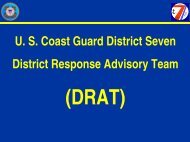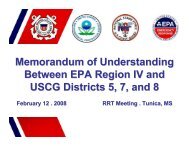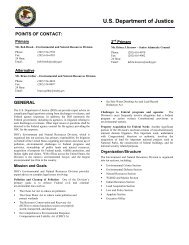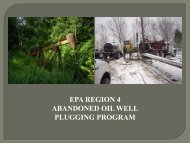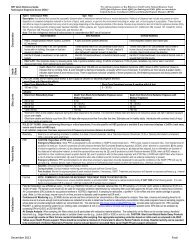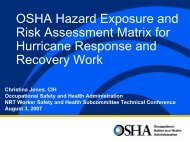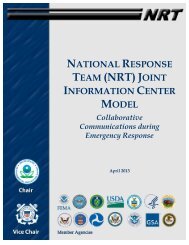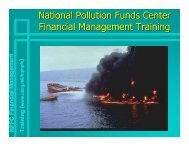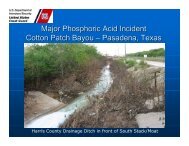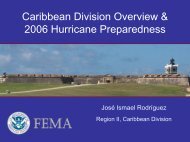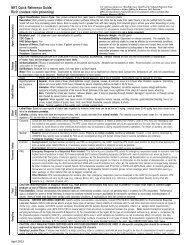USE OF DISPERSANTS - U.S. National Response Team (NRT)
USE OF DISPERSANTS - U.S. National Response Team (NRT)
USE OF DISPERSANTS - U.S. National Response Team (NRT)
- No tags were found...
You also want an ePaper? Increase the reach of your titles
YUMPU automatically turns print PDFs into web optimized ePapers that Google loves.
CARIBBEAN REGIONAL RESPONSE TEAMPOLICY FOR<strong>USE</strong> <strong>OF</strong> <strong>DISPERSANTS</strong>IN OCEAN AND COASTAL WATERSINTRODUCTIONFollowing an oil spill, response actions are needed to minimize or reduce the threat to human health andenvironmental impact. While physical control and recovery techniques are the traditional responsemeasures, other countermeasures also need to be considered. Dispersants are chemicals that orient at thewater-oil interface and, by reducing the surface tension, cause all or part of the slick to be dispersed intothe water column. Scientific studies indicate that using dispersants can, under certain conditions,significantly reduce the negative short-term and long-term environmental impacts of oil spills.This Dispersant Use Policy is set forth by the Federal Caribbean Regional <strong>Response</strong> <strong>Team</strong> (CRRT) forthe use of dispersants in response to oil spills on coastal or ocean waters. Its fundamental concept is thatdispersing all or part of the slick in offshore waters can prevent the potentially more devastating impactsof oil on sensitive environments inshore. Effective use of dispersants has a limited window ofopportunity due to weathering characteristics of oils, which are rapidly affected by the physicalenvironment. The effective application of dispersants, therefore, requires that pre-approval for dispersantuse exists as a valid spill countermeasure option.This Caribbean Dispersant Use Policy includes pre-authorization agreements, consistent with the <strong>National</strong>Contingency Plan (NCP), in the form of Letters of Agreement (LOAs) for Puerto Rico and the U.S.Virgin Islands. These LOAs permit the use of dispersants in specifically designated areas. Within preapprovedareas, further consultation by the Coast Guard OSC is not required, as long as the appropriateCRRT agencies are notified and the relevant protocols are followed. This plan is not intended to excludeor prevent the use of mechanical, in-situ burning, biological, or other cleanup methods. Instead, itencourages the combination of techniques to minimize a spill’s effect.Pre-authorization is not limited to only those organizations with pre-established contracts with dispersantapplication operators. Due to the time-critical elements involved in a dispersant-use decision, however,the Caribbean RRT strongly recommends that contractual arrangements for provision of the necessaryequipment and personnel for aerial spraying operations be established prior to an incident to avoidunnecessary delays in implementation of this policy.CH-1



